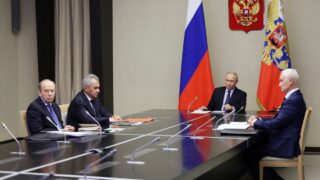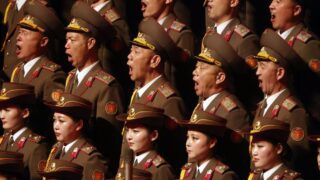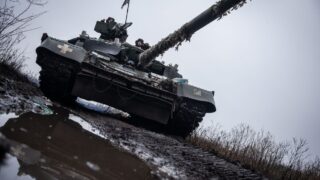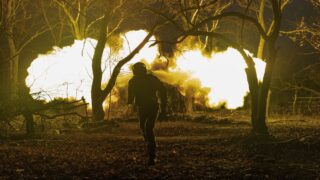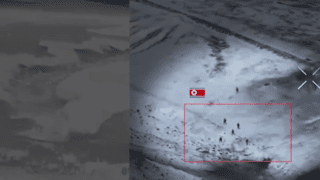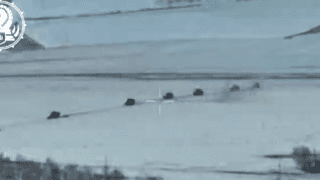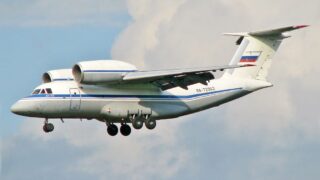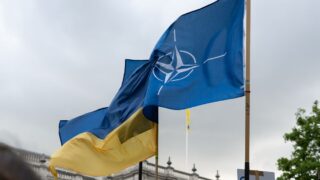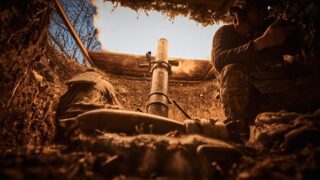
Is NATO ready for war with Russia?
The launch of Russia's full-scale invasion of Ukraine in February 2022 confronted the North Atlantic Treaty Organization (NATO) with a new geopolitical reality.
Described as "braindead" by French President Emmanuel Macron only a few years prior, the alliance woke up to a threat previously thought consigned to the past: a full-out conventional land war on the European continent.
Military officials have since churned out warnings of a resurgent Russian threat to NATO, saying allies must be ready in three, five, or eight years' time.
“The Russian Federation has become a problem for the world order, for democracy. In fact, it is a war of Russia with the democratic world. It is not (just) a war with Ukraine,” Romanian Defense Chief Gheorghita Vlad said in February of this year.


After decades of fighting insurgents rather than armies, underfunded European forces still sobering up from the post-Cold War "peace dividend years," and the shadow of Donald Trump's return to the White House, NATO's readiness for such a clash lies in doubt.
"NATO could not defeat Russia given its current capabilities without incurring significant cost in terms of casualties, damage, and temporary loss of territorial sovereignty,” Gordon B. Davis, a senior fellow at the CEPA think tank and NATO’s former deputy assistant secretary general, told the Kyiv Independent.
Collectively, the 32 members of NATO can field a powerful, and modern fighting force, but — its European contingent at least — faces ammunition shortages, a fragmented defense industry, and insufficient air defense coverage.
Then there is the question of unity and the will of Western societies to make sacrifices in a costly and prolonged war.
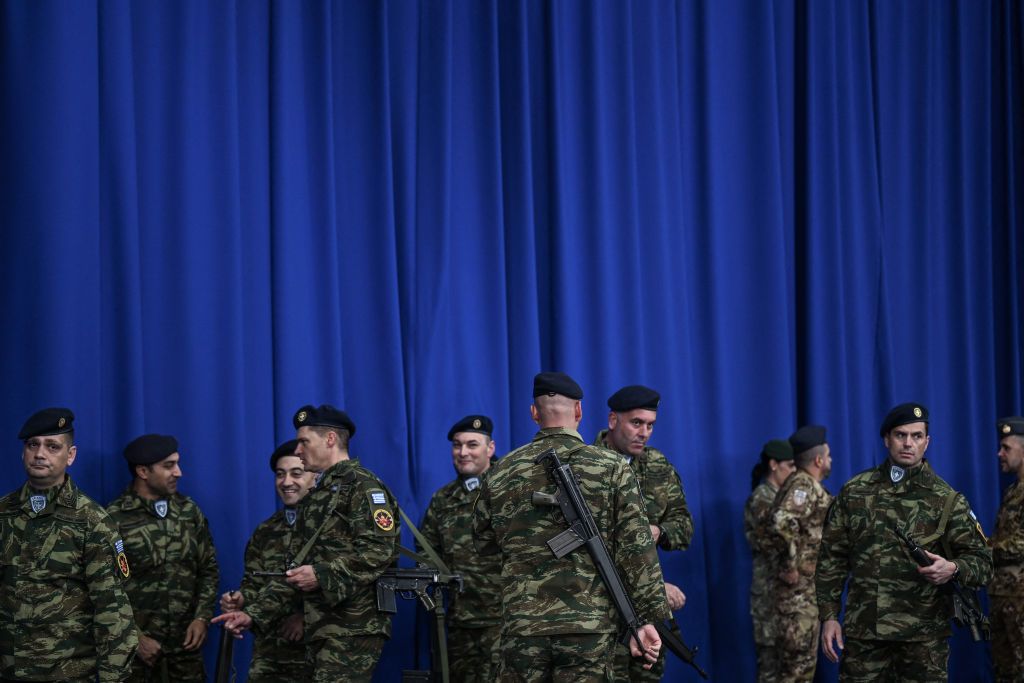

NATO’s capabilities
Despite years-long decline, NATO can still pack a punch.
In many aspects, even the European part of the alliance can outgun Russian forces, boasting a larger number of active duty personnel, advanced long-range capabilities like Taurus or Storm Shadow/SCALP missiles, and larger, more modern airpower.
While NATO, not counting the U.S., has roughly 1.9 million active personnel, 2,400 combat-ready aircraft, and 6,650 tanks as of 2024, Russia has estimated 1.1 million active troops, 1,370 aircraft, and 2,000 tanks, according to the Center of Strategic and International Studies (CSIS).
NATO also grew stronger with the accession of two new members — Sweden and Finland — adding two well-trained and interoperable militaries to the alliance and a more than 1,300-kilometer-long border for Russia to defend.
"There is still an overwhelming ability by NATO for death and destruction in terms of long-range fire, anything launched from the fleet of F-35 (advanced jet fighters), for example," Ed Arnold, a senior research fellow at the Royal United Services Institute (RUSI), said in comments for the Kyiv Independent.
"If they (Russia) fought how they fight now, in Ukraine, against a NATO force, they would be destroyed pretty quickly," he added, referring to Russia's high-mortality "meat grinder Storm-Z tactics."
Davis agrees that NATO would have the upper hand but wouldn't avoid losses.
"Assuming a conventional fight only, NATO would outfight Russia's air forces and naval fleets, although its bombers, drones, and submarines would succeed in striking NATO territory and forces," he said, adding the alliance "would defeat Russian ground forces, but not necessarily prevent them from taking territory."
Many NATO planners have named the Baltic states as the most vulnerable to attack, situated as they are next to Russia, its staunch ally Belarus, and the heavily militarized Russian exclave of Kaliningrad.
In the event of a war between NATO and Russia, Russian and Belarusian forces linking up across the 40-kilometer-wide Suwalki Gap would cut off the only land route to all three Baltic states.
Shock-and-awe vs. the long haul
NATO might have the upper hand in a quick, "shock-and-awe" war where their superior firepower would quickly decimate Russian forces. The question is: would this be that kind of war?
The Kremlin is certainly aware of its weaknesses and strengths in comparison to its chief geopolitical opponent. As the first year of the full-scale invasion demonstrated, the Russian state and society were ready to absorb initial losses and reconstitute for a long fight.
"The majority of the combat experience within NATO forces are from Afghanistan, which is very, very different… from what might happen in a potential war between NATO and Russia," Arnold said.
Roughly 3,600 coalition troops were killed in 20 years of the Afghanistan War. The estimates of Russian troops killed in two and half years in Ukraine were placed at around 200,000.
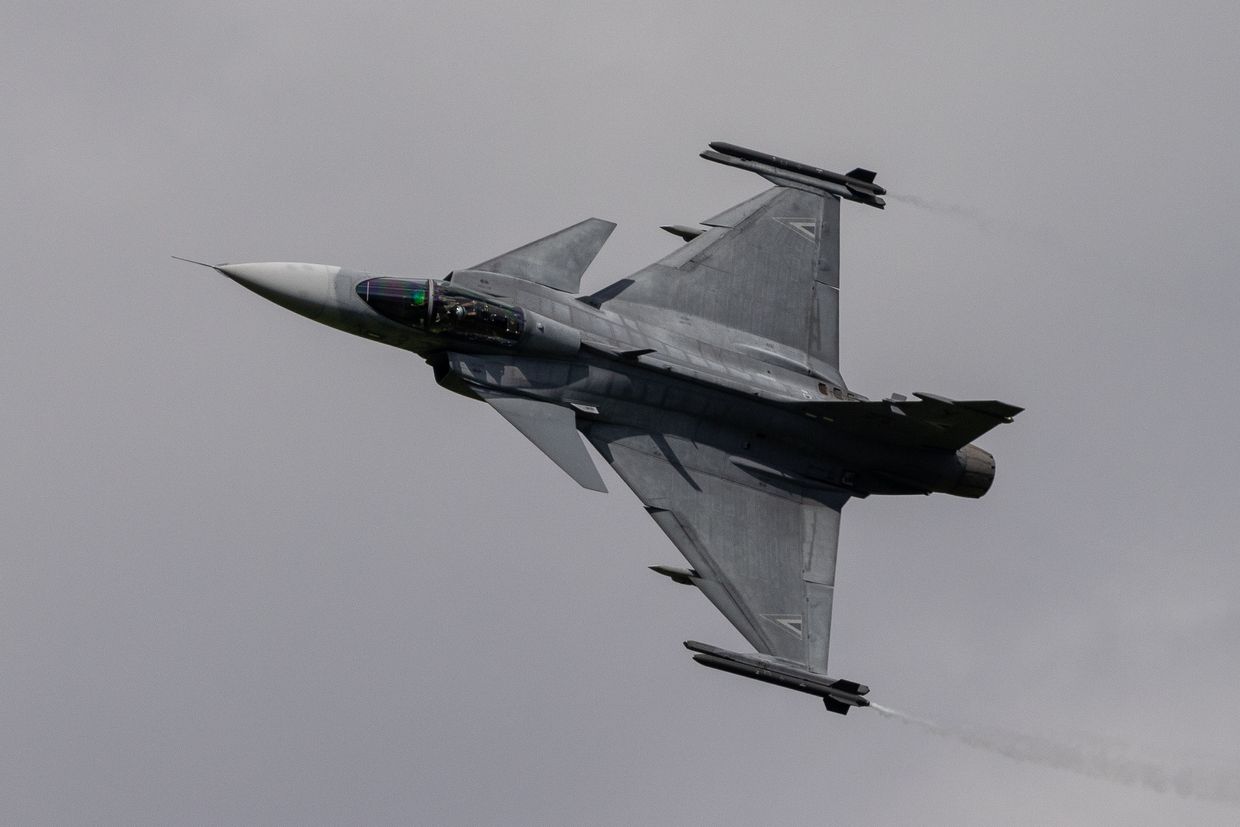

Western societies are likely to be much more sensitive to casualties, and their factories and armories have proven unprepared even for a sustained support of Ukraine.
Insiders told the Kyiv Independent last month that part of the reason behind slow-paced U.S. aid packages is empty Pentagon shelves. The EU was forced to postpone its promised 1 million shells to Ukraine due to the "lamentable state of the defense industry."
Alternatively, using "salami-tactics" — gradually using a series of small military actions rather than one big one — would test allied unity and courage to respond.
Rather than marching to Berlin or Paris, Russia could try to grab and hold a chunk of the Baltics and ward off any counterattack with the threats of a massive — even nuclear — escalation.
Nuclear weaponry remains the wild card and the Kremlin is not shy about threatening the use of its atomic arsenal. A recent change to its doctrine lowered the threshold for a nuclear response in a gesture obviously aimed at Western powers.
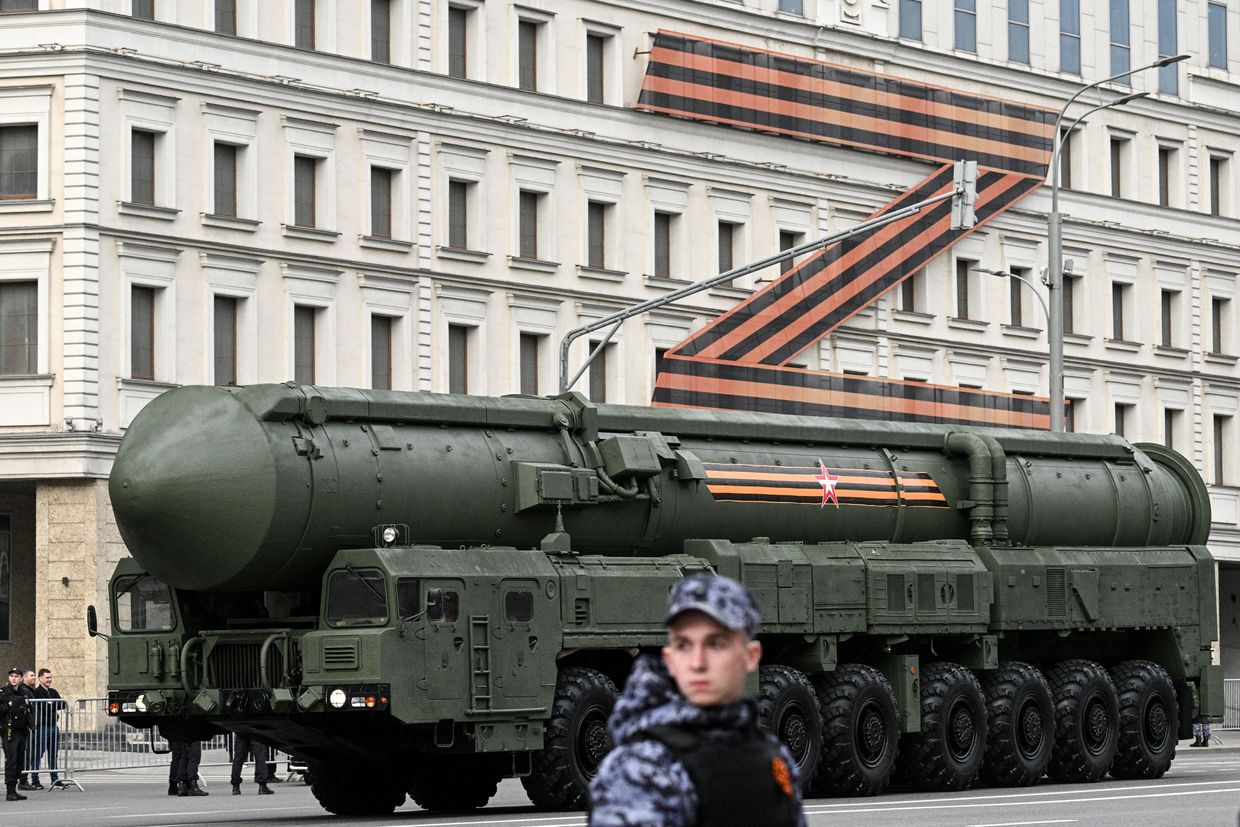



NATO catching up
In a written comment for the Kyiv Independent, Davis provided a "shopping list" of NATO's main weak spots: "Integrated air and missile defense, persistent surveillance, long to short range strike systems (including drones), land-based electronic warfare, ground munitions inventories (e.g., artillery, mortars, antitank), and anti-submarine warfare capabilities."
"NATO has exquisite capabilities in all these areas, but not in sufficient numbers, breadth, and depth in terms of stocks and defense production capabilities."
One key reason behind these deficiencies was the peace dividend Europe enjoyed in the post-Cold War period. Believing that the specter of a full-blown conflict with Moscow was gone, European nations cut average defense funding from 2.4% to 1.6% of GDP between 1990 and 2000.
Twenty-four countries abandoned conscription in the roughly two decades after 1990. While land forces of (West) Germany, Italy, France, and the U.K. could field 215, 135, 106, and 94 battalions in 1990, these numbers shrank to 33, 46, 44, and 50 by 2020, the International Institute for Strategic Studies (IISS) says. The U.S. scaled down its presence as well.
The alliance started slowly waking up to new realities in 2014 in the wake of the Russian war against Ukraine, the occupation of Crimea and the war in Donbas.
"The good news is (that) since 2014, starting with the Wales conference and every summit thereafter, we have truly increased the readiness of NATO," said retired U.S General Philip M. Breedlove, the supreme allied commander Europe (SACEUR) in 2013-16, in an interview with the Kyiv Independent.
Asked whether NATO is ready to face Russia today, Breedlove said: "No, but we're way more ready than we were in 2014."
The Wales summit saw the establishment of the Readiness Action Plan to bolster collective defense and deterrence. Two years later, NATO launched the Enhanced Forward Presence, deploying initially four, and later eight allied battalions along the alliance's eastern flank.
By 2022, SACEUR commanded 40,000 troops from the Baltic to the Black Sea, in addition to tens of thousands of host countries' troops, and some 100,000 U.S. soldiers in Europe.
The preparations kicked into higher gear after Russia's full-scale invasion of Ukraine. The Madrid summit in 2022 saw allies adopt the NATO Force Model, a three-tier defense plan that would make 300,000 troops ready within a month, and half a million within half a year.
This was in addition to increased aerial and naval readiness and exercises, such as this year's Steadfast Defender, which, with 90,000 troops, was the largest NATO drill since the Cold War.
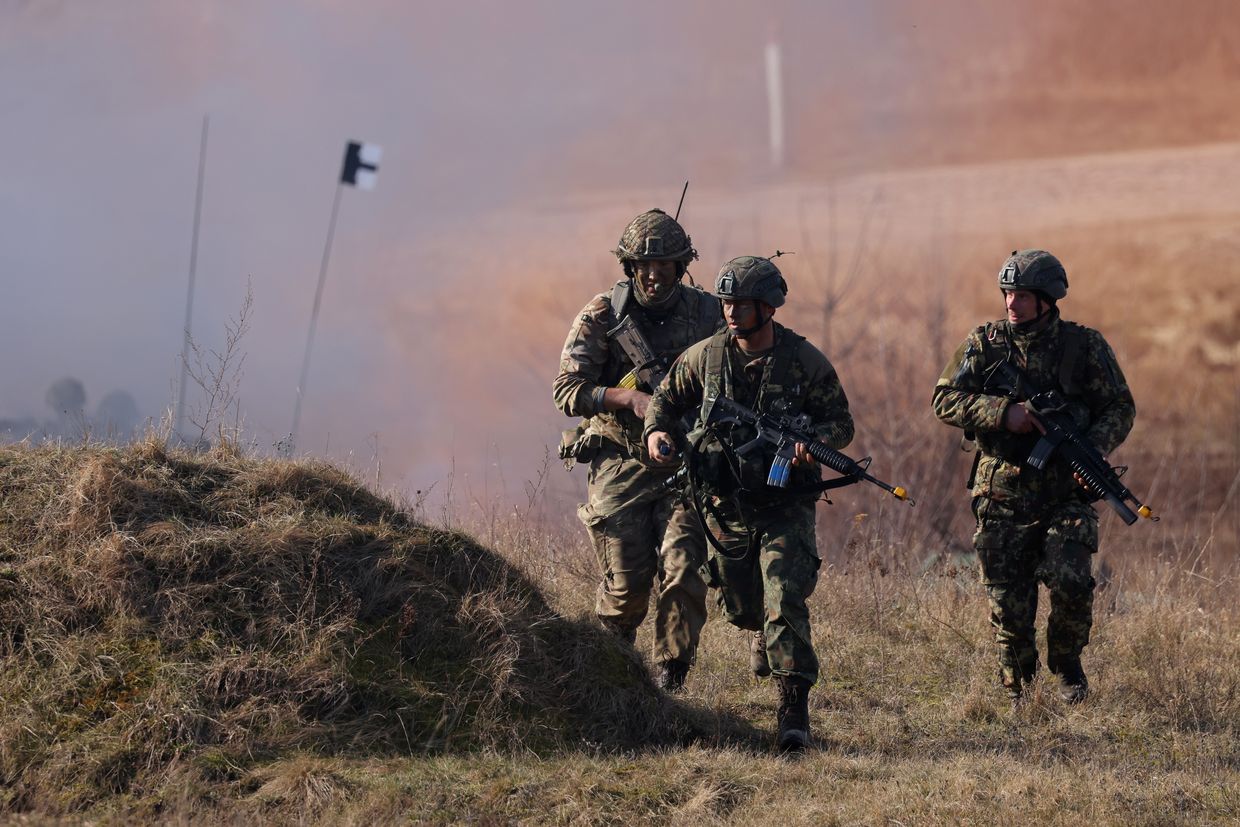

Fresh funds began flowing into defense. Whereas in 2014, only three allies met the 2% of GDP threshold, this number grew to 19 — including the newcomer Sweden — a decade later. Some members are even calling for raising the benchmark.
Since the start of the Russian war against Ukraine 10 years ago, the European allies have increased their defense spending by roughly a third to a total of $380 billion, CSIS's analysis said. In comparison, Russia's defense expenditures for the same year were around $110 billion, with much of it allocated to the war against Ukraine.
While impressive on paper, many of these plans face challenges with implementation. The efforts to have 300,000 troops on a one-month standby are complicated by disputes between national and NATO authorities, and low enlistment levels in member countries. IISS analysts pointed out that only a few European militaries actually grew in size in the past decade.
Despite new investments in defense production, Swedish Defense Minister Pal Jonson told the Kyiv Independent earlier this year that it could take up to two years before artillery shell manufacturing is at the desired level.
The aforementioned long-range missiles, like Storm Shadow or Taurus, are not even currently in production, and the former is being used up in Ukraine, Arnold noted.
Introducing official
merch from the Kyiv Independent
const eshopBannerv3Btn = document.getElementById(“snippet__officialMerchV1_button”);
eshopBannerv3Btn.addEventListener(“click”, () => {
window.dataLayer?.push({
event: `InternalLinkClick`,
element_category: “Banner e-shop”,
element_name: “Special article snippet”,
target_url: “https://store.kyivindependent.com/”,
target_text: “Shop now”,
});
window.open(“https://store.kyivindependent.com/”, “_blank”);
});
Uncertain politics and Trump's shadow
In the end, the execution of these ambitious plans rests on the unity and political willingness of individual members, which may very well be NATO's Achilles' heel.
The possible return of Donald Trump to the White House is increasing concerns across European capitals. The former president famously said that he would encourage Russia to do "whatever the hell it wants" to those members who do not meet the defense spending benchmark.
On the other side of the Atlantic, Hungary has been repeatedly breaking the allied consensus, and one official even recently implied that Budapest would not resist a Russian invasion. Populist and radical political forces are growing in Slovakia, France, Germany, the Netherlands, and elsewhere.
Fatigue is also growing across the alliance, even though the current sacrifices mostly entail only small fractions of budgets and retired military hardware.
"The main weakness of NATO at the moment is that people just aren't on the same page with this (Russian) threat," Arnold said, underscoring the differences between countries in NATO's north and east on the one hand and the western part on the other.
Another great uncertainty is the result of Russia's war in Ukraine. Russian forces are currently fully engaged and have suffered heavy losses. Their capability to reconstitute depends on when and how the war ends.
The "how" is the most decisive factor. Estonian Defense Minister Hanno Pevkur said earlier this month that If NATO wants to avoid a clash with Russian forces, it needs to help Ukraine win.
"Should Russia be able to rebuild, restructure, and adapt its defense capabilities, and training and doctrine, following a conflict with Ukraine, it would pose an even greater threat to NATO," Davis warned.




